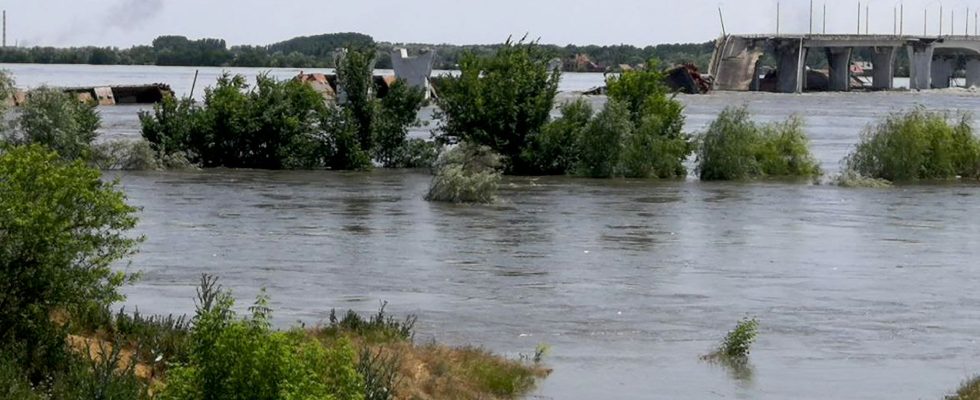Is the destruction of the Kakhovka dam in southern Ukraine – blamed on Russia by kyiv – about to change our view of the effects of war on the environment? Humanitarian and environmental, the consequences of this disaster are cascading. “The dam contains 18 km3 of water in the Kakhovka reservoir and supplies water to the driest regions of Ukraine as well as the nuclear power plant in Zaporizhia”, warns the Ukrainian organization Ecoaction. “The water from the reservoir is also crucial for irrigation in the southern regions. Hundreds of thousands of hectares of agricultural land will lose their supply, which could lead to a humanitarian catastrophe.” Finally, several national natural parks with dozens of protected species and habitats are threatened and the aquatic and coastal ecosystems upstream of the river will suffer from the drying up, the NGO is alarmed.
“Russia is guilty of brutal ecocide,” denounced Ukrainian President Volodymyr Zelensky, who said he feared “massive environmental damage”. Same alert from the side of Ukrainian Prime Minister Denys Chmygal who estimated on Wednesday that Russia had caused “one of the worst environmental disasters of recent decades”.
Convict Russia
Rarely has the environmental aspect of war been so indisputable. It has also been the subject, since the start of the conflict, of persistent denunciation by Ukrainian political leaders and international organisations. In December Volodymyr Zelensky already denounced an “ecocide” after the listed death of thousands of dolphins in the Black Sea, directly linked according to him to the effects of the Russian invasion in Ukraine. Since then, the term has been used many times by the Ukrainian President, and the Ministers of Defense and Ecology regularly communicate on the damage caused by the conflict on this territory known to be home to more than a quarter of European biodiversity. . The Ukrainian Ministry of Environmental Protection and Natural Resources has even embarked on a vast inventory of the environmental damage caused by Russia. The Ukrainian government platform EcoZagora thus has 2,295 reports indicating disastrous effects for the ecology, and estimates the amount of these impacts at nearly 50 billion euros.
“Very often the environment is considered collateral damage of war, but this time we have access to satellite images that show the extent of the damage, and a very strong mobilization of civil society and environmental NGOs that we is on the ground in the same way as humanitarian NGOs”, notes Marie-Ange Schellekens, researcher in environmental law at the University of La Rochelle and specialist in the effects of conflicts on nature.
The reasons are many. By deliberately targeting infrastructure likely to impact civilian populations, Moscow is accused of a war crime, but the Ukrainians also intend to condemn Russia for its environmental effects. “Ecocide does not exist from the point of view of international law, and Ukraine will not be able to condemn Russia for it, but there are provisions in the laws of war aimed at protecting the environment which could apply”, explains Marie-Ange Schellekens.
120 million tons of greenhouse gases
In order to advance the law, and obtain the recognition of an ecocide on their territory, Ukrainian deputies made the trip last November to Paris and were received at the National Assembly by the committees for international affairs and development. sustainable. “The lines are moving slowly, but the Ukrainian conflict is changing the way we perceive the law of war on the environmental issue,” says the researcher.
As a sign of this ever-increasing attention to the ecological effects of war, a report, due to be published on the sidelines of the United Nations climate summit in Bonn this week, focused on the greenhouse gas emissions generated by the conflict. The findings, released by Reuters, point out that the first twelve months of the war should cause a net increase of 120 million tonnes of greenhouse gases, or the equivalent of the annual production of a country like Belgium. According to this report, almost half of the net increase in emissions since the start of the war is linked to the reconstruction of buildings, roads and factories damaged by the fighting.
